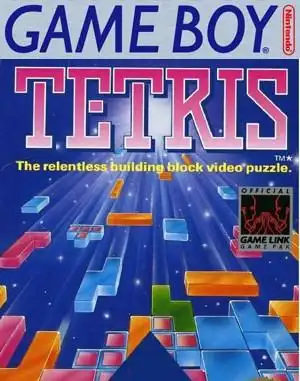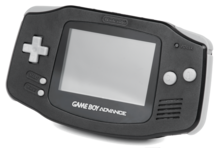Tetris: Why the Falling Blocks Still Stack Up Today
Remember the feeling? That quiet intensity, the gentle music building, the blocks falling faster and faster until panic sets in? Few games conjure such a universal sensation as Tetris. It's more than just a video game; it's a cultural phenomenon, a simple concept executed so perfectly it has captivated generations.
Long before complex narratives and stunning 3D graphics, one game proved the power of pure, elegant design. Tetris, created by Alexey Pajitnov in 1984, arrived like a geometric revelation. It wasn't about shooting aliens or saving princesses; it was about fitting shapes together. And somehow, that simple act became one of the most addictive and enduring experiences in entertainment history.
But with countless games released since, why does Tetris still hold such a special place in the hearts of retro gamers and newcomers alike? Let's dive into the magic behind those iconic falling blocks.
More Than Just Falling Blocks
At its core, Tetris is deceptively simple: rotate and arrange seven different geometric shapes (tetrominoes) as they fall to create solid horizontal lines, which then disappear. The goal is to clear lines and prevent the stack from reaching the top. That's it.
Yet, this minimalist premise unlocks a deep well of strategic thinking, spatial reasoning, and pure, unadulterated flow state. As you play, your brain shifts into a unique rhythm – anticipating shapes, planning placements, and reacting instantly. It's a perfect blend of logic and reflex, making it easy to learn but incredibly difficult to master.
The game's genius lies in its infinite nature and escalating challenge. There's no "winning" Tetris, only playing until you can't keep up. This creates a constant, personal challenge to beat your last score, clear more lines, or survive just a little bit longer as the speed increases. It's a pure, unadulterated test of skill and endurance.
The Many Faces of Tetris: Beyond the Game Boy
For many, the quintessential Tetris experience is tied to the original Nintendo Game Boy. Bundled with the system, it became the killer app, turning commutes, lunch breaks, and quiet evenings into block-dropping sessions. The monochrome screen, the iconic A-Type music – it's etched into the memory of a generation.
But Tetris didn't start or end with the Game Boy. It exploded across virtually every platform imaginable:
- Arcades: Early versions like Atari's were popular, often featuring vibrant graphics and competitive modes.
- Home Computers: From DOS PCs (remember the BPS version?) to the Commodore 64 and Amiga, Tetris was a staple.
- Home Consoles: The NES saw both the official Nintendo release and the highly sought-after Tengen version (known for its 2-player competitive mode). The SNES brought versions like Tetris & Dr. Mario and the unique Tetris Battle Gaiden with power-ups.
- Handhelds: Beyond the Game Boy, it graced the Game Gear, Lynx, and countless mobile phones over the years.
Each version often brought its own quirks, visual style, music, and sometimes unique modes. Exploring these different iterations is part of the fun for a retro enthusiast.
Multiplayer Mayhem: Tetris with Friends (or Foes!)
While often seen as a solitary pursuit, Tetris can be fiercely competitive and surprisingly cooperative. Many versions featured multiplayer modes that added a whole new layer of chaos and strategy.
Remember sending "garbage" lines to your opponent by clearing multiple lines at once? This simple mechanic turned a calm stacking exercise into a frantic race to survive while simultaneously trying to bury your friend.
Notable multiplayer versions for retro fans include:
- Tengen Tetris (NES): Famous for its excellent head-to-head mode, a feature missing from Nintendo's official NES release.
- Tetris & Dr. Mario (SNES): Offered a solid competitive mode pairing two classic puzzle giants.
- Tetris Battle Gaiden (SNES): A Japanese release with unique characters and special power-ups, adding a Street Fighter-like twist to the block-dropping.
- Arcade Versions: Often featured simultaneous two-player modes, perfect for challenging a friend side-by-side.
Setting up a retro tournament? A competitive Tetris showdown is an absolute must!
Where to Play the Classics Today
Feeling the urge to clear some lines? Luckily, the timeless nature of Tetris means classic versions are still accessible to retro enthusiasts:
- Emulation: This is often the easiest route. Emulators like DOSBox for PC versions, or multi-system emulators running on PCs or devices like RetroPie, can faithfully recreate the experience of consoles like the NES, SNES, and Game Boy. You'll need the game ROMs or disk images, which can sometimes be found via legitimate means or on archival sites like Archive.org (check local copyright laws!).
- Official Digital Releases: Nintendo Switch Online often includes classic NES and SNES versions of Tetris as part of its subscription service. While not always the exact original port you remember, they offer legitimate ways to play on modern hardware.
- Original Hardware: If you still have your old consoles and cartridges/disks, dust them off! Nothing beats the feel of the original controller.
Whether you track down a specific port or just fire up a readily available version, the core Tetris experience remains just as compelling now as it was decades ago.
The Legacy Endures
From its humble beginnings on a Soviet computer to dominating handhelds and arcades worldwide, Tetris proved that a simple, perfect game concept can transcend technology and time. Its influence is seen in countless puzzle games that followed, but none have ever quite captured the pure, unadulterated magic of the original.
So, next time you have a few minutes, skip the complex modern titles and let the familiar shapes fall. Rediscover the quiet intensity, the satisfying 'click' as lines clear, and the timeless challenge of Tetris. It's a retro classic that will always stack up.
Frequently Asked Questions About Classic Tetris
Which is the "best" version of classic Tetris?
This is subjective! The Game Boy version is iconic for portability and nostalgia. The NES versions (especially Tengen for 2-player) are fan favorites. Arcade versions offer a different feel. It often comes down to personal preference and the platform you grew up with.
Can I play classic Tetris multiplayer on modern systems?
Yes! Many emulators support netplay, allowing you to play classic multiplayer versions like Tengen Tetris or SNES Tetris online with friends. Modern official releases like Tetris Effect also have excellent multiplayer modes inspired by the classic gameplay.
Is the music in Tetris different in various versions?
Absolutely! While the Game Boy's "Type A" music (Korobeiniki) is the most famous, different versions featured unique soundtracks. The NES versions, arcade games, and PC ports all had their own memorable tunes that add to their distinct feel.


